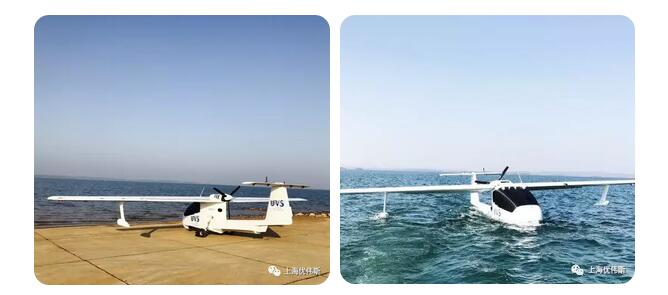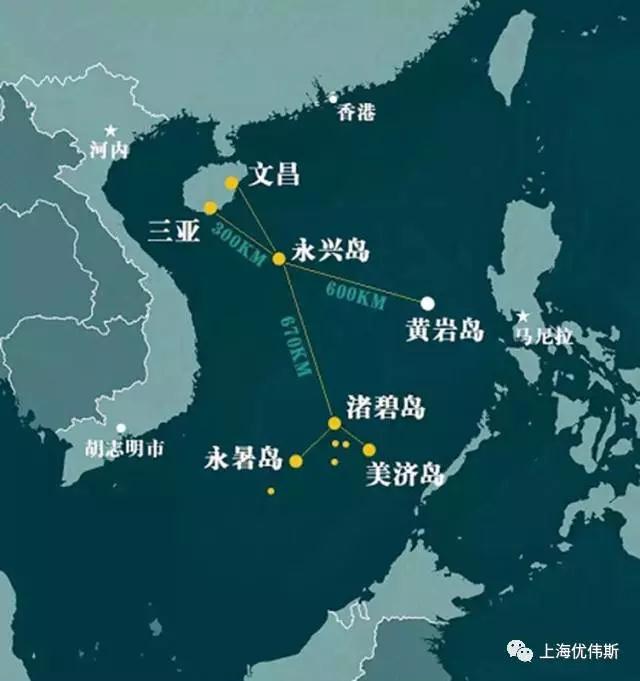Hendrik_2000
Lieutenant General
Irrespective of the dispute live goes on and Vietnam dependent on China will only grow with time
Despite strains, Vietnam and China forge closer economic ties
By My Pham and Matthew Tostevin,Reuters 1 hour 55 minutes ago
By My Pham and Matthew Tostevin
HANOI (Reuters) - Tensions are high on the South China Sea as Vietnam faces off against China over their overlapping maritime claims.
But for the boatmen on the junks cruising the calm expanse of Vietnam's Ha Long Bay, another growing Chinese presence in the region is very welcome indeed.
"More than half our tourists are Chinese now," said Nguyen Van Phu, 33, who has spent six years working on the boats that chug between the bay’s spectacular stone towers. "If they stopped coming it would be a big problem, if not a disaster."
The number of Chinese tourists in Vietnam has surged this year, just one sign of the growing economic ties between two long-time enemies. Chinese investment in Vietnam is also increasing rapidly, as is trade between the two countries.
But while tourists, trade and investment are being welcomed, they also present a challenge for a fiercely independent country like Vietnam, which has been wary of China’s growing influence in the region.
"The rising economic dependence on China makes it more difficult for Vietnam to decide how far to confront China on the South China Sea," said Nguyen Khac Giang, a researcher at the Vietnam Economics and Policy Research Institution.
Vietnam would suffer far more than China economically in the event of political instability given its smaller size, he said.
China exports more goods to Vietnam than any other country in Southeast Asia, sending textiles to be made into shirts and sneakers, and electronic components for mobile phones and large flat-panel displays. Those completed products are exported around the world, as well as back to China.
Vietnam also makes electronics components for factories in China, and exports computers for Chinese consumers.
Manufacturers see Vietnam as an attractive base, with wages as little as a third of those in coastal regions of China, according to employment consultants.
And while proximity has historically been a source of friction between the two countries - they fought a border war as recently as 1979 and armed clashes flared for years afterwards - for manufacturers it's a boon.
"We strategically invested in Vietnam because of its geographical advantage – closer to China and hence lower cost on materials, transportation and relatively shorter production lead time," said Bosco Law, chief executive of the Hong Kong-based Lawsgroup. The company makes clothes for brands such as Gap, whose global operations include scores of outlets in China.
Businesses contacted by Reuters declined to talk openly about the risks for them of tension between Vietnam and China.
Chinese trade and investment has surged across Southeast Asia in recent years as companies search out new bases for manufacturing and consumers for their goods.
China has also invested in infrastructure and plans to pour development funds into Southeast Asia as part of its sprawling Belt and Road initiative.
That has already had a political effect.
Big recipients of Chinese investment such as Cambodia and Laos are promoting China's line on the South China Sea at regional meetings.
President Rodrigo Duterte of the Philippines, meanwhile, has cited Chinese investment pledges as he softens his country's stance on its maritime disputes with China.
MISTRUST
Tensions between Beijing and Hanoi have been high since mid-June, when Chinese pressure forced Vietnam to suspend oil drilling on a block that overlaps the line China says marks its claim to almost all the South China Sea.
As Vietnam has emerged as the most vocal regional opponent of China's maritime claims in Southeast Asia, it has drawn Beijing's ire. Its growing defense links to the United States, Japan and India also make China suspicious.
The Vietnamese government has also had to contend with public pressure at home. A row over Chinese oil drilling in disputed waters in the South China Sea in 2014 sparked anti-China riots in Vietnam in which foreign factories thought to be Chinese were set on fire, before the rig was removed.
Tourism dipped in the aftermath, but quickly bounced back. Trade has also risen steadily since then.
Exports to China jumped nearly 43 percent to $13 billion in the first half of 2017 from a year earlier, according to customs data. Imports rose more slowly, climbing 16 percent.
Chinese tourist arrivals, meanwhile, soared 60 percent to nearly 1.9 million in the first half of 2017 to account for around one third of all foreign visitors.
For the most part, the government has welcomed the boost from Chinese tourism, as it strives to meet a 6.7 percent target for annual economic growth.
INVESTMENTS WELCOMED
Vietnam is also welcoming Chinese investments, if cautiously.
"We should be careful but at the same time we should take advantage," said Nguyen Mai, the president of Vietnam's Association of Foreign Invested Enterprises.
The biggest foreign direct investors in Vietnam have long been from South Korea and Japan, particularly in the electronics sector. More than 100,000 Vietnamese work for Samsung alone in Vietnam.
However, Chinese investment is growing quickly, nearly doubling last year to almost 8 percent of total foreign direct investment. Investment went into solar panel and plastics factories, among other areas.
Direct U.S. investment accounts for about 2 percent of the total so far this year; the United States is also Vietnam's second-largest trade partner.
For a graphic on Vietnam-China trade, click:

(Additional reporting by Mai Nguyen)
Despite strains, Vietnam and China forge closer economic ties
By My Pham and Matthew Tostevin,Reuters 1 hour 55 minutes ago
By My Pham and Matthew Tostevin
HANOI (Reuters) - Tensions are high on the South China Sea as Vietnam faces off against China over their overlapping maritime claims.
But for the boatmen on the junks cruising the calm expanse of Vietnam's Ha Long Bay, another growing Chinese presence in the region is very welcome indeed.
"More than half our tourists are Chinese now," said Nguyen Van Phu, 33, who has spent six years working on the boats that chug between the bay’s spectacular stone towers. "If they stopped coming it would be a big problem, if not a disaster."
The number of Chinese tourists in Vietnam has surged this year, just one sign of the growing economic ties between two long-time enemies. Chinese investment in Vietnam is also increasing rapidly, as is trade between the two countries.
But while tourists, trade and investment are being welcomed, they also present a challenge for a fiercely independent country like Vietnam, which has been wary of China’s growing influence in the region.
"The rising economic dependence on China makes it more difficult for Vietnam to decide how far to confront China on the South China Sea," said Nguyen Khac Giang, a researcher at the Vietnam Economics and Policy Research Institution.
Vietnam would suffer far more than China economically in the event of political instability given its smaller size, he said.
China exports more goods to Vietnam than any other country in Southeast Asia, sending textiles to be made into shirts and sneakers, and electronic components for mobile phones and large flat-panel displays. Those completed products are exported around the world, as well as back to China.
Vietnam also makes electronics components for factories in China, and exports computers for Chinese consumers.
Manufacturers see Vietnam as an attractive base, with wages as little as a third of those in coastal regions of China, according to employment consultants.
And while proximity has historically been a source of friction between the two countries - they fought a border war as recently as 1979 and armed clashes flared for years afterwards - for manufacturers it's a boon.
"We strategically invested in Vietnam because of its geographical advantage – closer to China and hence lower cost on materials, transportation and relatively shorter production lead time," said Bosco Law, chief executive of the Hong Kong-based Lawsgroup. The company makes clothes for brands such as Gap, whose global operations include scores of outlets in China.
Businesses contacted by Reuters declined to talk openly about the risks for them of tension between Vietnam and China.
Chinese trade and investment has surged across Southeast Asia in recent years as companies search out new bases for manufacturing and consumers for their goods.
China has also invested in infrastructure and plans to pour development funds into Southeast Asia as part of its sprawling Belt and Road initiative.
That has already had a political effect.
Big recipients of Chinese investment such as Cambodia and Laos are promoting China's line on the South China Sea at regional meetings.
President Rodrigo Duterte of the Philippines, meanwhile, has cited Chinese investment pledges as he softens his country's stance on its maritime disputes with China.
MISTRUST
Tensions between Beijing and Hanoi have been high since mid-June, when Chinese pressure forced Vietnam to suspend oil drilling on a block that overlaps the line China says marks its claim to almost all the South China Sea.
As Vietnam has emerged as the most vocal regional opponent of China's maritime claims in Southeast Asia, it has drawn Beijing's ire. Its growing defense links to the United States, Japan and India also make China suspicious.
The Vietnamese government has also had to contend with public pressure at home. A row over Chinese oil drilling in disputed waters in the South China Sea in 2014 sparked anti-China riots in Vietnam in which foreign factories thought to be Chinese were set on fire, before the rig was removed.
Tourism dipped in the aftermath, but quickly bounced back. Trade has also risen steadily since then.
Exports to China jumped nearly 43 percent to $13 billion in the first half of 2017 from a year earlier, according to customs data. Imports rose more slowly, climbing 16 percent.
Chinese tourist arrivals, meanwhile, soared 60 percent to nearly 1.9 million in the first half of 2017 to account for around one third of all foreign visitors.
For the most part, the government has welcomed the boost from Chinese tourism, as it strives to meet a 6.7 percent target for annual economic growth.
INVESTMENTS WELCOMED
Vietnam is also welcoming Chinese investments, if cautiously.
"We should be careful but at the same time we should take advantage," said Nguyen Mai, the president of Vietnam's Association of Foreign Invested Enterprises.
The biggest foreign direct investors in Vietnam have long been from South Korea and Japan, particularly in the electronics sector. More than 100,000 Vietnamese work for Samsung alone in Vietnam.
However, Chinese investment is growing quickly, nearly doubling last year to almost 8 percent of total foreign direct investment. Investment went into solar panel and plastics factories, among other areas.
Direct U.S. investment accounts for about 2 percent of the total so far this year; the United States is also Vietnam's second-largest trade partner.
For a graphic on Vietnam-China trade, click:

(Additional reporting by Mai Nguyen)



